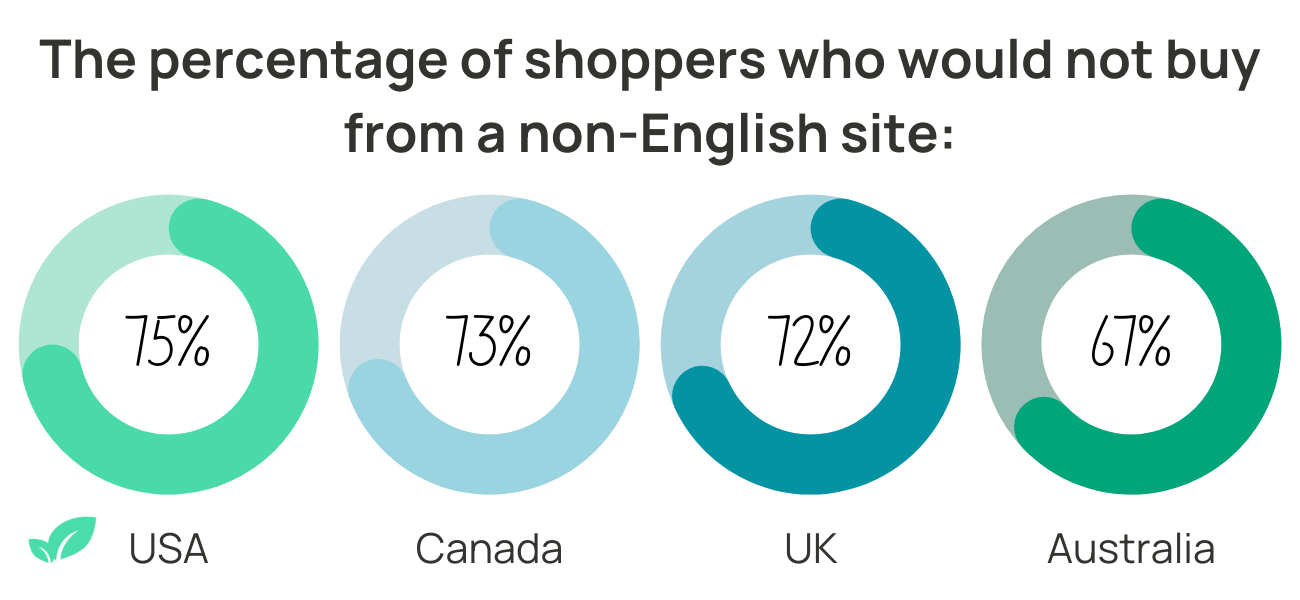
Biggest eCommerce Trends to Embrace in 2024 and Beyond
The eCommerce industry is in a perpetual state of evolution. In today’s digital age, customers have the freedom to shop virtually from anywhere, at any time. To capture their attention and remain relevant, brands and eCommerce stores must continually strive to not only meet but exceed customer expectations.
To make this possible, shops online should follow eCommerce trends as they act as a strategic determinant in this extremely competitive space. They offer insight into what matters most to consumers and give businesses the foresight to meet those expectations ahead of their competitors. So, what’s on the radar for 2024?
In this article, I’ll dive into the top eCommerce trends that shape online shopping as the new year begins. From implementing new technologies to changing consumer behaviours, I’ll explore everything that is in vogue in eCommerce today, so you can gain a competitive advantage in the ever-evolving world of online retail.
The Changing Landscape of Online Shopping
With the rapid increase in the availability and use of the Internet, exceeding five billion users worldwide, the trend of online shopping continues to grow. Projections showed global eCommerce retail sales to exceed $5.7 trillion in 2022, and current forecasts indicate this number will reach unprecedented levels in the coming years (Statista).
The convenience of shopping from anywhere, anytime has become the norm, challenging brands to rise above just meeting these expectations. Today, the eCommerce space is more competitive than ever and requires innovation, adaptability and a deep understanding of consumer behaviour and shopping habits to thrive. Staying ahead of the competition is not just a choice, but a necessity for eCommerce companies that want to stay relevant.
In 2024, the eCommerce landscape is undergoing a profound transformation. Just like the dynamic changes observed in previous years, this year promises to be crucial for the industry.
2024 eCommerce Trends You Need to Know
From the integration of cutting-edge technologies to the evolving expectations of consumers, eCommerce business trends for 2024 are poised to shape the future in the coming year and beyond. Let’s explore crucial eCommerce business trends for 2024!
Increased Smartphone Adoption
A visible trend in the eCommerce area is the unprecedented growth of mobile commerce, commonly known as M-commerce. Data from 2023 showed that mobile devices accounted for over 70% of retail e-Commerce website visits globally, leading to the majority of online orders compared to desktops and tablets (Statista).
Notably, mobile commerce has gained significant popularity in Asia, where countries such as China and South Korea generate more than two-thirds of their total online sales via mobile devices (Statista).
With the rapid adoption of mobile devices, the integration of mobile technology will continue to shape the future shopping experience. Forecasts indicate that by 2024, mobile commerce will account for 42.9% of eCommerce sales (Business Insider).
Another aspect of mobile shopping is that, according to Shopify, social commerce sales are expected to triple by 2025, even though currently only 47% of U.S. consumers say they make purchases through social media platforms.
The Rise of Live Shopping
Recent years have seen remarkable progress in a variety of marketing channels. Building on social commerce, live shopping has proven to be a particularly popular strategy and has seen widespread success in China, where the market reached $3.49 billion in 2021 and is expected to grow to $4.92 billion by 2023 (Statista).
Live shopping refers to a dynamic and interactive online shopping experience where consumers can make real-time purchases while watching a live broadcast. It involves a host or influencer showcasing products, answering questions, and engaging with viewers in real time.
The concept typically involves a live video stream where products are demonstrated, discussed, and sometimes even tested or reviewed. Viewers can participate by asking questions, expressing preferences, and making purchases directly within the live stream.
The appeal of live shopping is its convenience, entertainment value and interactivity, providing audiences with a unique and immersive experience that resembles visiting a store but with the added convenience of being on the go. As a result, bridging entertainment and online shopping, live streaming has the huge potential to change the status quo and become the new norm for eCommerce in 2024.
The Crucial Role of Localised Content When Shopping Online
Catering to consumers in their local language has emerged as a pivotal new eCommerce trend in the success of international online shopping.
A survey conducted by PayPal reveals that 57% of customers shop internationally, with nearly two in five making international purchases in the past three months. Moreover, the study by Flow.io underscores the significance of language translation, as 21% of respondents were concerned with the lack of it on the eCommerce site. For English-speaking shoppers, over two-thirds said they would not purchase if the site was not in English.
Our graphic is based on the source: https://f.hubspotusercontent10.net/hubfs/8483863/FINAL_white-paper-cross-border-shopping-9x9_web.pdf
The impact of native language adoption extends beyond mere translation tools like Google Translate – it profoundly influences the customer experience from the initial impression to the checkout process.
According to the same Flow.io report, global consumers emphasise the importance of localised content in crucial areas of online stores, such as product descriptions (67%), product reviews (63%), and the checkout process (63%). However, around three-fourths of respondents in English-speaking countries said they needed all areas of the website in English.
Same-Day Delivery as a Future of eCommerce Trends
The evolution of eCommerce delivery expectations includes a shift from two-day to next-day delivery, and now same-day delivery is emerging as the latest consumer demand shaping the industry.
About half of shoppers say the availability of same-day delivery increases their willingness to shop online, fueling the same-day delivery market, which is expected to reach a significant $14.9 billion in 2024 (Statista).
The urgent need for fast delivery is in line with consumers’ expectations for the immediacy of online shopping. With the dominance of on-demand shopping platforms, such as Uber Eats, eCommerce brands are expected to follow suit. It’s worth noting that this trend doesn’t necessarily threaten sustainability efforts, as many companies are already opting for carbon-neutral courier services.
As an example, Allegro (a Polish eCommerce platform) has implemented custom delivery services, even offering same-day delivery in certain locations, providing a faster option compared to other eCommerce sites. On the other hand, retailers like MediaExpert offer the option to “pick up in-store within an hour” as an alternative to courier delivery, acknowledging that courier processes may not always align with the immediacy consumers seek.
Integrating same-day delivery systems will be essential for eCommerce companies to maintain success and retain customers at the risk of losing them to more forward-thinking competitors.
Automated Returns Management
Automated returns management will become a key eCommerce solution to address the returns challenge. According to Soocial, 30% of online shoppers intentionally overbuy and then return the items they don’t want.
So, while returns are a significant inconvenience for many retailers, implementing an automated returns management system can prove to be a game-changer.
Nowadays, those systems can use advanced algorithms to evaluate various aspects of returned products quickly. Moreover, the integration of AI disposition engines goes a step further, enabling the system to leverage existing data and insights for optimal decision-making. Whether it’s for return routing to a supplier, aftermarket, refurbishment, disposal, parts collection or recycling, automated returns management provides a streamlined and efficient process.
Sustainability as a Differentiator for Modern Consumers
The dominance of sustainable options in consumer choices has become a crucial trend, reflecting a broader societal shift towards environmentally conscious living.
According to McKinsey, a solid 78% of U.S. consumers prioritise a sustainable lifestyle, as evidenced by their purchasing preferences. It is worth noting that 60% of buyers are willing to pay a premium for products with sustainable packaging, and 42% consistently choose environmentally friendly products (Statista). Even the delivery process isn’t exempt – 28% of shoppers actively consider the environmental impact of their chosen delivery options when shopping online (Statista).
According to Dani Mechlowitz, the founder of eCommerce brand Delta Fulfillment, 2024 will see a surge in the number of eCommerce brands focusing on sustainability. Strategies include going paperless, adopting recyclable or biodegradable packaging, and offering “near-perfect” versions of products at discounted prices (Linkedin).
This not only allows eco-conscious businesses to reduce their carbon footprint but also provides marketing-minded entrepreneurs with unique selling propositions to stand out in a saturated market.
In an environment where multiple eCommerce companies are competing for attention, consumers are looking for compelling reasons to choose one over the other, which creates a key opportunity for brands to align with sustainability as a differentiator.
Metaverse Integration to Boost Sales
As the metaverse continues to gain momentum, eCommerce brands are eagerly exploring new frontiers in the digital realm.
This innovative trend involves the creation of virtual storefronts and immersive shopping experiences within the metaverse’s expansive virtual worlds. Shoppers can step into these immersive environments, interact with products, and even socialise with other users, making the eCommerce experience more engaging and interactive than ever before.
Examples of the eCommerce metaverse include Roblox or Decentraland. Roblox enables internet users to engage in transactions involving virtual items like clothing, accessories, and pets using debit cards. These exchanges often occur within social contexts, such as virtual parties. On the other hand, Decentraland offers a virtual marketplace for buying and selling digital collectables like virtual real estate and artwork. Here, users also can explore virtual events to discover new creators.
As the boundaries between the physical and digital worlds blur, eCommerce companies are poised to revolutionise the way consumers shop and connect, ushering in a new era of online retail.
Using Augmented Reality for Shopping Decisions
Augmented reality (AR) has moved beyond its gaming roots and is now a powerful tool shaping the way people make purchasing decisions. About 16% of U.S. shoppers already see the importance of AR in their purchasing choices, and that number will grow as technology advances and becomes more accessible to online retailers and businesses (Statista).
IKEA is exemplifying this trend with the launch of the IKEA Place app, which allows customers to virtually visualise IKEA products in their own living spaces.
source: https://www.ikea.com/global/en/newsroom/innovation/ikea-launches-ikea-place-a-new-app-that-allows-people-to-virtually-place-furniture-in-their-home-170912/
The application solves typical doubts that customers may have before making a purchase, e.g. whether the product fits into their existing interior.
By seamlessly integrating AR technology, IKEA not only eliminates pre-purchase uncertainty but also provides customers with a convenient opportunity to check out the aesthetics and make direct purchases via the app.
As augmented reality continues to evolve, its integration into the shopping experience becomes increasingly important, offering customers a revolutionary way to interact with products before making a purchasing decision.
AI-Powered Personalised Shopping Experiences
In the ever-changing eCommerce landscape, AI-powered product recommendations stand out as a transformative force.
According to a survey conducted in early 2023, more than half of consumers in Portugal expressed a desire for personalised online product recommendations, ranking the country first among 17 surveyed nations. In the United States, 49 per cent of shoppers closely followed suit in expressing their preferences (Statista).
Recognising the critical role of personalisation in the customer journey for successful online shopping, companies can leverage Artificial Intelligence algorithms to significantly improve customer experiences. Using a variety of customer data, such as browsing and purchase history, as well as social media activity, these systems can generate tailored recommendations for individual customers.
This level of hyperpersonalisation ensures that customers receive the most relevant product suggestions, which promotes increased sales and greater customer engagement. In addition to immediate benefits, AI-powered systems streamline seller operations, saving time and money by eliminating the need for manual personalisation processes in personalized shopping experiences.
Moreover, as Machine Learning algorithms continue to evolve, there is additional potential for predictive analytics, enabling sellers to anticipate upcoming trends and stay ahead of the competition while maximising sales potential. Integrating AI into product recommendations not only improves the shopping experience but also establishes a forward-looking strategy for sustainable success in the competitive eCommerce landscape.
Significance of Community Commerce
Humans, as social creatures, are deeply affected by feelings of loneliness and social isolation. Recognising the profound impact that communities have on well-being, it becomes clear that your community should exist primarily to benefit your users.
An example of this principle is SOM Studios, a company with a vision of creating a safe haven for creators and inspiring individuals to pursue their dreams. By establishing a community on Instagram, they launched the “Project 50” challenge, uniting like-minded people and encouraging personal development. As a result, the project’s Instagram account has gained over 100,000 followers, contributing significantly to the company’s brand awareness with over 75,000 followers.
Buying from a community you’re already familiar with and have a longstanding connection with eliminates the necessity for research to establish trust. The existing relationship naturally fosters confidence, as you inherently understand the community’s reliability well before any transaction takes place.
In the hyper-competitive eCommerce environment where price and product quality often take centre stage, cultivating a dedicated community that passionately supports your brand and its values can be a real differentiator.
Trends eCommerce Businesses Need to Follow: Summary
In the rapidly changing eCommerce environment, staying ahead of the competition is of the utmost importance.
In this article, I explored the transformative trends shaping the online shopping experience: from the rise of mobile commerce and live shopping, through the key role of localised content and the demand for same-day delivery to the integration of Metaverse experiences, and much more.
As you follow these trends, it becomes clear that eCommerce in 2024 will be not just about transactions; it’ll be about creating engaging, immersive and personalised experiences that meet consumers’ evolving needs and preferences.
If you’re looking to gain a competitive edge today, introduce customised solutions for your store or create a custom app that will revolutionise the market, our team would be more than happy to assist! Don’t hesitate to contact me at [email protected] or reach me on Linkedin!
Introducing Angelika as your strategic ally in navigating the dynamic landscape of software development. With a specialised focus on various areas, her commitment is to provide you with a competitive edge and foster enduring connections. Whether it’s optimising logistics processes, supporting startups on their growth journey, or enhancing the retail experience, she is dedicated to delivering tailored solutions that align seamlessly with your objectives.





